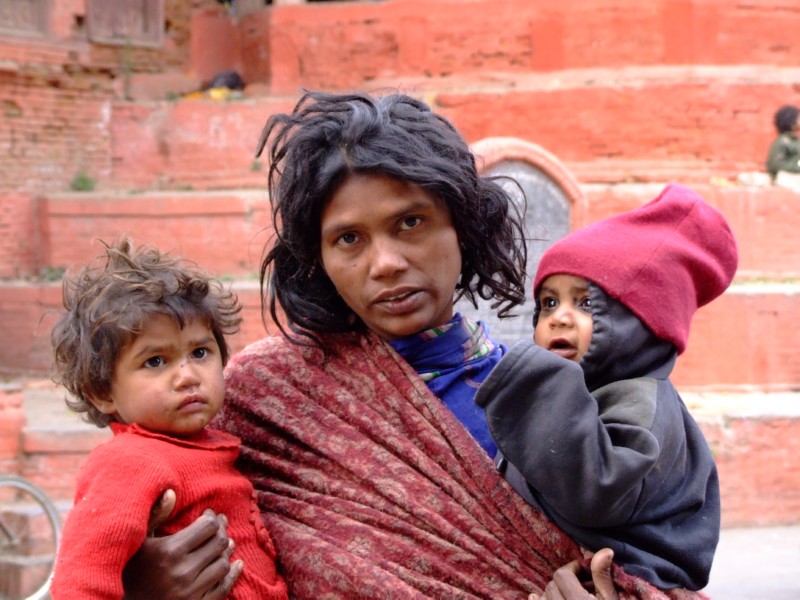
There is no exact data on the number of beggars in the city. Post File Photo
The Kathmandu Metropolitan City has yet again come up with a plan to make Kathmandu a beggar-free city.
Publishing a notice on Friday, the City has announced that it will be banning begging on the roadsides and in public spaces, alleys, bus parks, inside public vehicles and near government offices. But the notice has exempted sadhus and bhikshus (monks and nuns) and those with a tradition of begging for alms by visiting people’s doors.
The notice states that the rule will be implemented in 10 days. The City came up with the plan as endorsed by the 11th municipal assembly held on June 19.
Although the City had earlier, in December 2019 when Bidya Sundar Shakya was mayor, announced a similar plan, it could not be implemented for it was brought without any long-term, sustainable programme to rehabilitate the homeless.
Then came the Covid-19 pandemic and subsequent lockdown, starting from March 24, 2020 and the City totally ignored the issue.
Even in 2019, then prime minister KP Sharma Oli had announced to make the streets of the Capital beggar-free within a year. A few homeless people were picked from the streets and sent to various old-age homes, but that did not solve the problem.
There is no exact data on the number of beggars in Kathmandu city. However, they are seen along the roadsides and in parks and public vehicles. Nor has the City conducted any study on who they are and where they come from?
“I came to know about the City’s new plan through the news. These days I have seen more beggars on roadsides and on the temple premises. There are many. There are also child beggars who I have found don’t understand Nepali,” said Sunita Thapa, 42, from Old Baneshwar.
The City’s new notice is slightly different than the previous one.
“There will be no restrictions for sadhu, santa, jogi or bhikshu (monks and nuns) and those with a tradition of begging for alms by visiting people’s doors,” reads the notice.
The notice further says that those violating the new rule will be booked as per Section 126 of the criminal code and local level governance act 2074 BS (2017), which allows fining and jailing anyone who employs children for begging on the streets. The fines range from Rs1000 to 30,000.
Anthropologists, however, call it a populist stunt. Dambar Chemjong, head of the anthropology department at the Tribhuvan University said the mayor should work to find out who these beggars are and where they come from, before announcing the plan to make the city free of beggars and how they can be rehabilitated.
“There are beggars even in developed countries. During my recent visit to Paris, I saw many beggars. So our mayor sounds like populist when he announces such a plan,” said Chemjong.
Basanta Acharya, information officer at the City, said they plan to deploy staff on the streets to remove beggars. “We decided to impose the ban after receiving complaints from people.”
While the idea may look good, it comes with some issues attached, as beggars also enjoy the basic human and fundamental rights. The way the City plans to treat beggars makes them criminals.
Unless begging is decriminalised, it will mean empowering the City police that have been notorious when it comes to treating street vendors.
Only on Thursday, a video clip showing the City Police seizing the pushcart of a street vendor selling roasted corn at Baluwatar went viral on social media drawing widespread criticism. “Government seen on the streets. Has the Metropolitan City declared a beggar-free Capital or a Capital free of working class people,” tweeted @chghimire.
Experts say authorities need to find out why people come to the streets to beg and how many beggars are there in the City. Then accordingly a long-term and sustainable programme can be worked out so as to make a city free of beggars.
Acharya, the information officer at the City, said they will provide shelter to the homeless at the Samakhusi-Based Manav Sewa Ashram and another shelter at Banasthali run by the Ashram, in coordination with the Kathmandu Metropolitan City. The two shelters have the capacity to accommodate 200 and 1,000 people respectively.
In June 2019, the Post ran a story on the homeless people who were given shelter at the Ashram but fled to Pashupati to beg saying that they were tortured at the Ashram. A few of those who spoke to the Post had said that in the initial days, they were given food but later the quality of food and the management of the place became progressively worse.
“We are equally concerned about the issue because those who are going to be rescued are homeless people and they need love, care and psychological counseling,” said Acharya.
In the second week of June, the new Mayor Balendra Shah and Deputy Mayor Sunita Dangol had visited the Manav Sewa Ashram for an inspection.
Acharya said the City is holding a meeting with Manav Sewa Ashram officials and other stakeholders on Monday.
“It’s not an easy job… we are learning by doing, and past mistakes will not be repeated,” said Acharya.
According to the Kathmandu Metropolitan City, it is working to make a separate care home for homeless people in Nagarjun Municipality.
Mohan Bahadur Basnet, mayor of Nagarjun Municipality, said it has allotted 16 ropani of land to construct a facility to house the homeless.
“Two years ago, our City had signed an agreement with the Kathmandu Metropolitan City. We can make arrangements to house 1,000 homeless people and they will be provided with food and accommodation for free,” said Basnet.
He said a Rs110-million contract has already been awarded to a construction company and the shelter will be ready in two years.













